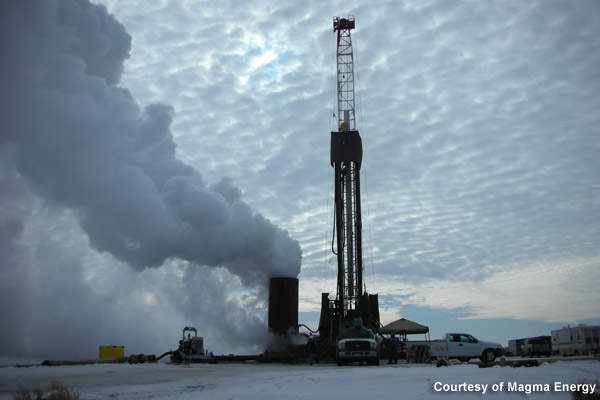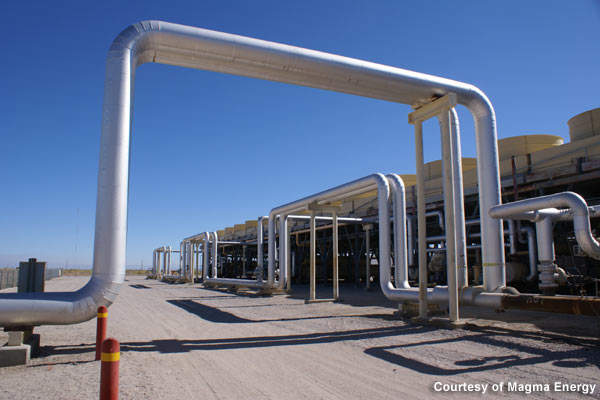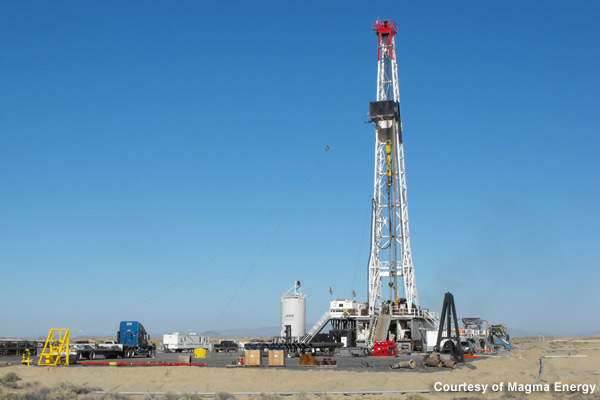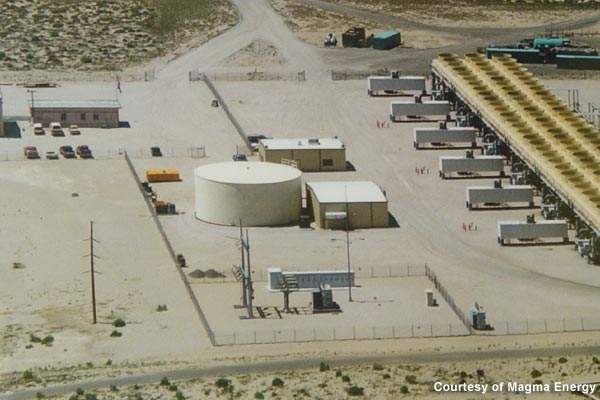The Soda Lake Geothermal plant is a dual geothermal electric-generating facility situated eight miles north-west of Fallon, Nevada, US. Nevada is the second-ranking US state in terms of geothermal resources. Soda Lake I was launched in 1987 and the second part of the facility, Soda Lake II, has been in operation since 1991.
The existing combined nameplate capacity of Soda Lake I and Soda Lake II is almost 23MW. Together, they generate an average output of 15MW, which was achieved for the first time in 2010.
Originally owned and operated by Magma Energy (now Alterra Power), the Soda Lake Geothermal Plant was refurbished in September and October 2009 to contribute an additional 1MW of power to the net output. Magma Energy merged with Plutonic Power and changed its name to Alterra Power in 2011.
Alterra Power sold the Soda Lake geothermal facility to an affiliate of Cyrq Energy in January 2015.
Soda Lake Geothermal Plant expansion
An expansion programme to meet the plant’s design capacity is currently under way. As part of the phase one expansion, two new production wells were drilled and the surface piping and equipment were upgraded to generate 15MW of net power.
A flow test of the first production well, 45A-33, was successfully completed on 6 January 2010. The well, drilled in June 2009, demonstrated a continuous flow of 1,200gpm at 385°F. The well has a capacity to generate 3MW of net power. Phase one was completed in 2010, resulting in a net additional capacity of 4MW.
Phase one required a total investment of $21m, 30% of which is reimbursed by the US Treasury Grant. Phase two of the expansion programme commenced in June 2010 to increase the designed capacity of the plant to 37MW.
Geothermal plant details
The Soda Lake facility is spread over an area of 2,071ha. Four production wells and four injections wells supply geothermal fluid to the plant. Both Soda Lake I and Soda Lake II are binary cycle power plants with an installed design capacity of 5.1MW and 18MW, respectively.
Binary cycle technology enables the plants to use cooler reservoirs that stop excess gas release. It allows the usage of a higher number of reservoirs, resulting in greater efficiency and lower cost.
A water-cooled condensing system is installed in Soda Lake I, and Soda Lake II is equipped with an air-cooled condensing system. To carry the generated power, a 60kV line is provided from the entrance of the plant.
Geothermal process
The plant is supplied with hot fluid from geothermal reservoirs. Heat is transferred via a heat exchanger to a separate pipe that carries fluids of lower boiling temperature. The fluids, which consist of isobutene or isopentane, are vaporised to generate power for the turbines. The pressure of the expanding vapour drives the turbines, which then powers the generators. Following this process, the geothermal fluid is cooled and returned to the reservoirs.
Nevada power grid network
The power generated from the Soda Lake plant is carried to an electrical substation, which redistributes it to the local electrical grid. Transmission lines, including 120kV, 230kV and 345kV, run in close proximity to the Soda lake operation. The area is also served by a regional railroad line that goes southwards.
All the generated power is purchased by NV Energy, a Sierra Pacific Resources subsidiary, located in Reno, Nevada. The company was acquired by Magma Energy Corporation in October 2008.
Power market in Nevada
Nevada is the fastest-growing state in the US in relation to electricity consumption. In 2014, the state consumed 35,075 million kilowatts of electricity. It currently ranks 38 in the US for electricity consumption.
The power market in Nevada is traditional and regulated. Many high-voltage transmission lines run across the stage to bring power to California. The state derives approximately 7% of electricity from geothermal power plants.
As of 2015, Nevada has 24 geothermal plants that together generate approximately 673MW of power.
A legislation passed by Nevada’s state government mandated that all power manufacturers would increase their output of renewable energy from 8% to 20% by 2015.
Nevada ranks second in the US in terms of geothermal potential. Less than 5% of Nevada’s geothermal resources are consumed by the Churchill County, which uses no more than 10% of the geothermal power generated.







